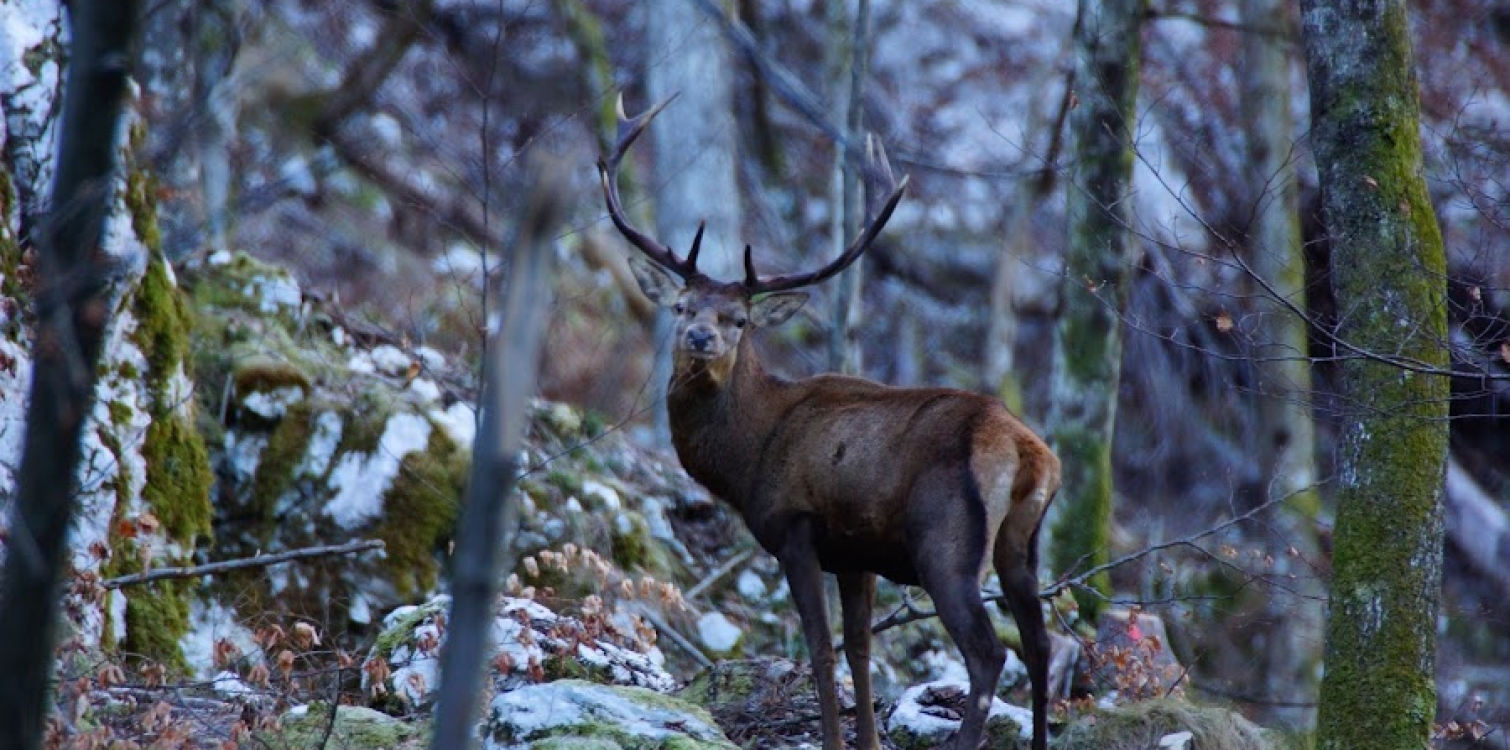
Source: Pixabay
The red deer (Cervus elaphus)
|
Size |
|
|
Weight |
|
|
Diet |
|
|
Habitat |
|
|
|
|
| Kingdom |
|
| Phylum |
|
| Class |
|
| Order |
|
| Family |
|
| Genus |
|
| Species |
|
In our region, most red deer live in mountain beech-fir forests, and in lowland areas, they inhabit floodplain forests. They live in areas where forest and meadow interlace.

Source: Pixabay

Source: Pixabay
The head is long, the ears large and pointed. The tail is longer than that of the roe deer, measuring 15 centimetres.
On the skull, the males have antlers, which consist of two brancheswith tines. The tines at the top of the branch form a crown. The right and left sides of the antlers are mirror-symmetrical. The two branches measure a maximum of 120 cm and have seven or more tines. The antlers fall off and regrow each year in March or April. The bony growth develops very quickly in spring, growing more than two centimeters per day. Females do not have antlers, so they are called "mule" or antlerless.
Deer are social animals. Males form their own groups, while females with offspring form theirs. In a group, deer are safer from predators. To avoid predators and humans, they graze at dusk or in the dark. Their main enemy is the wolf, which preys on injured, sick, and older, exhausted animals.
This herbivorous, even-toed ungulate is not picky—it eats anything that is succulent and appears in front of it. This mainly includes grasses and herbs, but also seeds and fruits. In winter, when fresh grasses and herbs are unavailable, tree bark and cambium become an important food source for deer.
In September, males try to gain as many females as possible by loud calls and physical contests of strength. The female is pregnant for about eight months and gives birth to one calf in May or June, which she nurses for about three months.
DID YOU KNOW?
- Antlers are bony outgrowths on the skulls of members of the deer family (typically males) that fall off and grow back every year. Horns, on the other hand, are bony outgrowths on the skulls of bovids, covered by a sheath of keratin. Horns grow seasonally throughout the animal's life and do not fall off, allowing the animal's age to be determined by them.
- Antlers are found on the males of all deer species, but in reindeer, females also grow antlers.
- For the first weeks of their lives, the young, called teleta, do not yet have a smell or the instinct to run away. They wait alone in a safe hiding place for their mothers. If you find them in the wild, don't grab them! If they get used to your smell, the female will not dare to approach them.
- Deer were almost completely wiped out in this country in the 19th century. Later, they began to be introduced from different parts of Europe.
- Red deer are very common in Mežakla, where they can be seen grazing near farms in winter.

